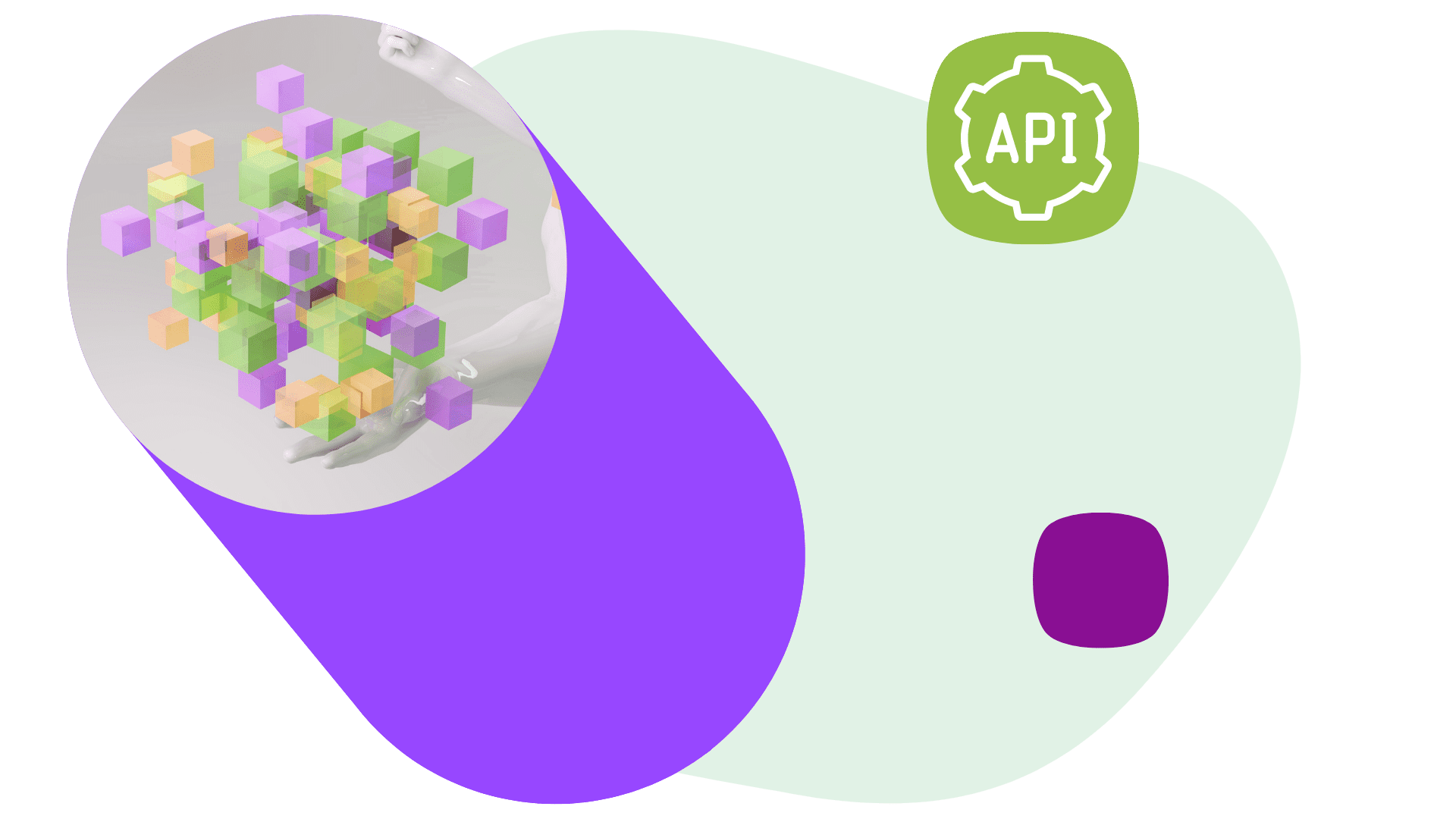


Get essential insights into API integration requirements and top tactics for seamless integration. Boost your development process with Latenode 🔗

Ever wondered why your software isn't performing as expected? It could be down to your API integration requirements. APIs are the unsung heroes of modern software development, acting as the glue that holds different software applications together. But without a proper understanding of their requirements, you're setting yourself up for a world of trouble.
Standardization in API integration, often facilitated by development tools, is not just a nice-to-have, it's an absolute must. It can make or break the performance of your software. So, getting clued up on what these requirements are and how they can impact your project, especially with the assistance of development tools, is crucial. We're talking about ensuring seamless communication between systems, improving efficiency, and saving you from unnecessary headaches down the line. No one said it was going to be easy, but trust us - it's worth it!
Key takeaways: API integration requirements entail identifying the specific functionalities needed from the API, such as the type of data or services it should provide, and how it should interact with your existing system. These requirements also include understanding the API's protocols, security measures, data structures, rate limits, and the necessary steps for error handling and testing.

Grasping the fundamentals of API integration is essential for connecting various software systems, enabling seamless data exchange and automation between applications.
API integrations hinge on three essentials: endpoints, methods, and data formats.
HTTP protocols form the backbone of API communication. They're like traffic rules for internet data exchange. Without them, your request might end up in a digital void!
Two major players in the API game are RESTful and SOAP APIs.
RESTful APIs:
SOAP APIs:
Finally, let's not forget about well-documented APIs! They're like treasure maps – guiding developers through integration process smoothly and efficiently. Remember, a well-documented API is half the battle won in successful integration!
Each type of API, whether it's REST, SOAP, or GraphQL, offers unique features and use cases, making them suitable for different integration scenarios depending on the specific requirements of a project.
Let's dive right in. There are three main types of APIs: public, private, and partner.
Each type has its own perks. Open APIs promote innovation and transparency. Private ones ensure security and customization. Partner APIs? They're great for enhancing strategic partnerships.
Next up, we've got different API platforms:
Each platform serves a unique purpose based on its environment and functionality.
Ever heard of Software Development Kits (SDKs)? Think of them as toolboxes for building software applications that interact with specific types of APIs.
SDKs often include libraries, code samples, processes documentation - all the goodies you need to build applications more efficiently.
So there you go! A quick rundown on the diverse world of API integration requirements from different types of API interfaces to their uses cases and advantages right down to the role SDKs play in this ecosystem!
API integration isn't a walk in the park. It's like building a house, you need a solid plan before you start hammering away.
Error handling plays a big role in this process. It's like playing whack-a-mole; when an error pops up, you need to smack it down immediately. Don't let errors slip through unnoticed.
Once everything is up and running, don't just kick back and relax. Continuous monitoring is key here. Think of it as babysitting; you wouldn't leave a baby unattended, would you?

Understanding the key components of an API request, including the endpoint, method, headers, and body, is crucial for ensuring seamless communication between systems.
Request headers are like the ID card of an HTTP request. They carry essential info such as content type, client (user-agent), and accepted languages. For instance:
GET /api/v1/users HTTP/1.1 Host: example.com User-Agent: Mozilla/5.0 Accept-Language: en-US,en;q=0.5
Next up, we have query parameters and path parameters. Think of them as the GPS coordinates for your API request.
HTTP methods are like verbs - they tell what action to perform on a resource.
Lastly, status codes reflect how things went down server-side.
Understanding these elements is crucial when dealing with API integration requirements. It's like knowing the language before visiting a new country!
API integration requirements demand a solid grasp of API request structures. Let's break it down.
An API request is like a package, made up of:
GET and POST requests are like picking up mail versus dropping off a parcel.
PUT and PATCH requests are akin to updating your shipping address or correcting a typo on the parcel label.
DELETE requests are equivalent to requesting that all records related to you be removed from the post office's system. They remove specified resources from the server-side entirely.
Remember, each part plays its role in ensuring smooth communication between applications via APIs!

Free public APIs offer developers access to a wide array of functionalities and data without any cost, enabling the rapid development of innovative applications. With Latenode, you can easily set up workflows that integrate free public APIs into your projects, automating tasks, retrieving data, and enhancing your application's capabilities. This guide will walk you through the steps to effectively integrate a free public API using Latenode.
Imagine automatically pulling in weather data from a free public API to update your application in real-time. With Latenode, this can be done effortlessly. Our platform handles the entire process, from API requests to data parsing and storage, allowing you to focus on utilizing the data rather than managing it.


This workflow can be visually represented in Latenode's interface, with each node connected in sequence, from data retrieval to storage and notification.
By leveraging Latenode's visual workflow builder and seamless integration with free public APIs, you can automate data-driven tasks, reduce development time, and enhance your application's functionality without additional costs.
If you need assistance with creating your own workflow or replicating this scenario, feel free to contact our Discord community of low-code automation experts who are available to help.
Ensuring robust authentication and encryption methods, such as OAuth and TLS, is essential to safeguard sensitive data and prevent unauthorized access during API integration.
Insecure Direct Object References (IDOR) can be a real pain in the neck. It happens when an application exposes an internal implementation object, like a file, directory, or database key. Without proper access control checks, attackers can manipulate these references to gain unauthorized access to data.
Example: Imagine you're at a coat check and instead of checking your coat, they give you access to all the coats. That's IDOR for ya.
Next up is broken authentication & session management. This bad boy happens when application functions related to authentication and session management are implemented incorrectly, allowing hackers to compromise passwords or keys.
Stat: According to OWASP, broken authentication is one of the top security risks in API integration.
The lack of security configurations or misconfigurations? Talk about a recipe for disaster! Without proper settings and controls in place, sensitive information can be exposed to unauthorized individuals.
Case Study: In 2017, due to misconfigured Amazon S3 buckets, Verizon suffered a major data breach exposing data of nearly 6 million customers.
Finally there's Cross-Site Scripting (XSS) attacks. They happen when an app includes untrusted data in a new web page without proper validation or escaping. This lets attackers inject malicious scripts into webpages viewed by other users.
Social Proof: GitHub had its fair share of XSS vulnerabilities back in the day. It was no walk in the park getting those fixed.
So there you have it folks! API integration ain't no cakewalk but knowing what dangers lurk around the corner sure helps.

The future of API integration will likely see increased adoption of AI-driven automation and enhanced security protocols to manage growing data complexity and cross-platform connectivity.
API integration isn't just a trend; it's the future. A surge in adoption is on the horizon, thanks to digital transformation. Businesses are realizing they can't afford to ignore this technology.
The tech world is leaning towards GraphQL, leaving RESTful architecture in the dust. Why? It offers more efficiency and flexibility - two things businesses can't get enough of.
There's a growing hunger for real-time data access. WebSockets and similar technologies are stepping up to fill this need. They're transforming how we interact with data by making it instantly accessible.
AI isn't just for robots anymore; it's making waves in API integrations too. These automated integrations are becoming more common, influencing how APIs function and interact with other systems.
So, what does all this mean? Well, if you're not already using API integrations or considering them for your business, now's the time to start. The future of API integration looks bright - don't miss out!
API integration requires a solid understanding of technical protocols, robust security measures, and a clear strategy to seamlessly connect various systems and applications.
No beating around the bush, understanding and implementing API integration requirements is a game-changer for business efficiency. It's like having an automatic transmission in your car, making the ride smoother and easier.
Don't kid yourself; security standards are critical in API integration. It's like having a sturdy lock on your door - you wouldn't want any unwelcome guests, would you?
Staying updated with the latest trends in API integration is not just cool, it's essential! Think of it as keeping up with the latest fashion trends - you wouldn't want to be caught wearing last season's styles.
Continuous monitoring post-integration isn't just about playing watchdog; it offers tangible benefits too! Imagine being a diligent gardener who regularly checks on their plants' health.
So there you have it folks! The lowdown on API integration requirements without all the mumbo jumbo. Remember, when done right, it can be a real ace up your sleeve!
You've learned the basics of API integration, from GET and POST methods to API request structures. However, security is just as important as technical knowledge. As more businesses adopt an API-first approach, the need for secure integrations grows. API integration involves multiple elements like automation, function calls, and backend connections, with APIs acting as the bridge between systems. Tools like Akana streamline code automation, while connectors link backend systems based on project needs. Successful integration requires skilled developers, careful planning, and thorough documentation to ensure a smooth and secure process.